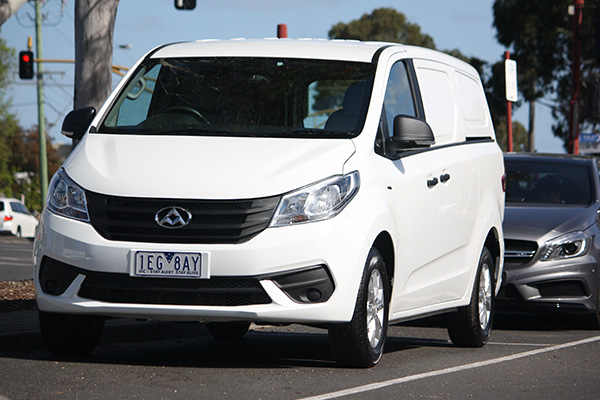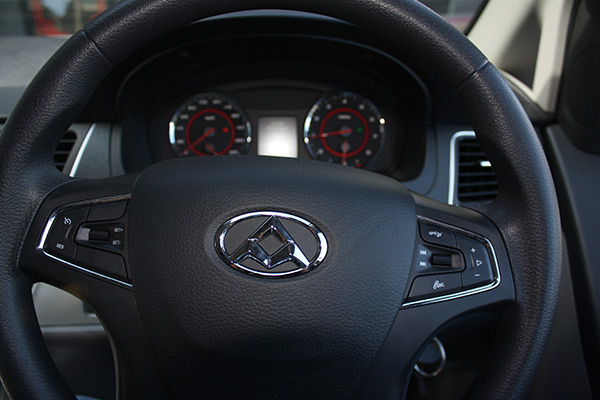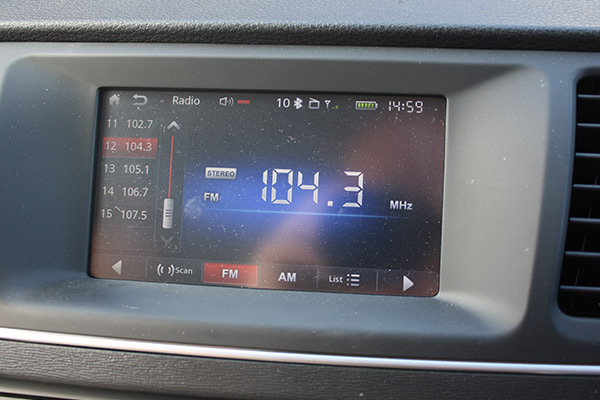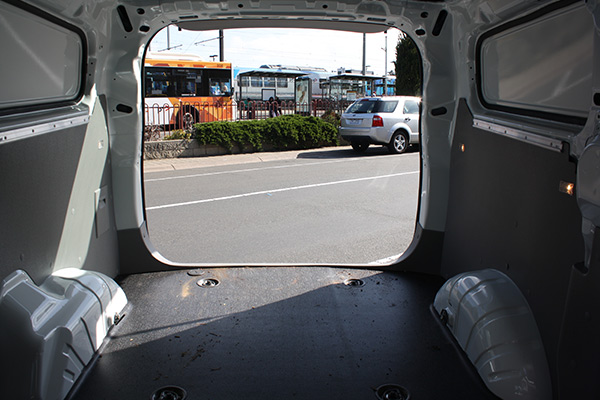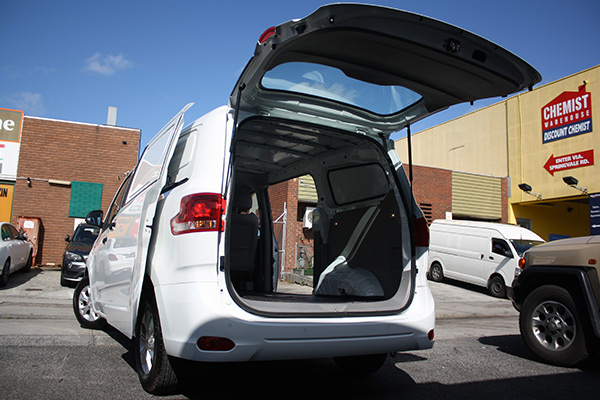Wouldn’t try a Chinese van for all the tea in China? Try spending some time behind the wheel of the LDV G10
Okay, I have to admit approaching the LDV G10 with more than a little trepidation.
Considering all of the action on the light commercial vehicle (LCV) front as final mile delivery tasks grow, there’s no shortage of competitively priced small and mid-sized vans on the Aussie market.
None of them are short on equipment and safety kit.
So I wasn’t sure how the Chinese made van would shape up.
The Oxford English Dictionary defines surprise as “an unexpected or astonishing event, fact etc.” — like the time I found out Sharknado was a feature film and not a wildlife documentary.
The actual dictionary definition of surprise may be pushing the boat out a little when it comes to my first impressions after climbing behind the wheel of the G10.
I must say I was caught off guard after heading off in my little Chinese-manufactured van.
It was indeed surprising.
The LDV brand originally hails from the United Kingdom after an early ’90s management buyout saw the company become Leyland DAF Vans.
By the mid-noughties LDV was owned by Russian commercial vehicle manufacturer Gaz before being purchased by state-owned Chinese auto maker Shanghai Automotive Industry Corporation (SAIC) in 2010.
SAIC is an automotive manufacturing powerhouse that produces vehicles numbered in the millions rather than hundreds of thousands and, incidentally, now owns the MG car brand.
The company now claims to be the largest auto maker in China and cranked out more than 5 million vehicles in 2014.
Since the 1980s, SAIC has entered into technology sharing deals with the likes of Volkswagen and GM.
GM’s buyout of troubled Korean manufacturer Daewoo, as well as buying into Ssangyong, also saw some access to Mercedes-Benz technology for the Chinese manufacturing behemoth.
The large V80 van platform owes its heritage to the LDV brand and is offered elsewhere in the global market as the Maxus.
However, the G10 is a ground up SAIC model that first emerged as a people mover.
It only takes a few moments to discern the mini-van heritage of the design.
The G10 is essentially a stripped out people mover.
I’m not sure that many buyers in this segment really take much notice of styling, however, it’s fair to say that the LDV is best described as pleasantly anonymous.
Engine and Transmission
A 2-litre twin turbo petrol engine gets the load lugger moving via a 6-speed ZF transmission.
The 2-litre donk puts out a pretty hefty 165kW and 330Nm of torque and slurps run of the mill unleaded.
If you have to tow something, it’ll handle 1,500kg of braked trailer behind it.
Cab and Controls
To address modern safety requirements the G10 comes armed with a couple of air bags, electronic stability control, ABS brakes, electronic brake forces distribution, roll movement intervention and emergency brake assist.
Really the G10 is specced and priced to take on the Toyota Hiace.
More expensive competing models from other companies come to the table with a bit more safety kit to offer.
The G10 is quite well appointed too.
A Bluetooth multi-media unit with 7-inch (18cm) screen also displays the reversing camera view behind the van and is standard equipment, as are the parking sensors.
This unit is equipped with two speakers.
The steering wheel tilts, and air-con and cruise control are also standard kit, as are fog lamps and keyless entry.
Load
The LDV G10 will take a payload of 1,093kg and has a load area volume of 5.2 cubic-metres.
Sliding doors on either side are standard as is the lift style tailgate at the rear.
There is no barn door option for the back, as with the Hiace.
And, as with most vans of this type on the Aussie market, an Australian-sized pallet won’t fit through the side doors.
Most of the world uses much narrower Euro-sized skids, hence the lack of forklift assisted pallet access into virtually all mid-sized vans on the Aussie market.
However, the lack of barn doors on the rear also means that it’s not possible to fork a pallet into the back.
From a commercial point of view, all freight needs to be hand-balled.
I did place a modest load of timber and steel on its back but nowhere near enough to challenge its claimed 1-tonne payload, a couple of hundred kilos at best.
It would be rare for most vans in this class to be regularly loaded up to that kind of weight, but it hauled along fine regardless.
Fit and finish is not bad, the plastics look and feel a little on the cheap side but there were no rattles, squeaks or buzzes from the interior while driving around. Even on the semi-rural roads that
I usually ply.
The only fly in the ointment was a fuse box cover that fell off when I hopped out on one occasion, but it just clicked back into place and wasn’t heard from again.
There’s no denying however, the LDV’s people mover heritage especially in the layout of the cockpit.
The load area does look like someone pinched the seats out of it on a dark night.
That said there are plenty of tie down points and the load bed is reasonably easy to access on foot, if a little high off the ground.
Performance
Unfortunately, the lack of a diesel donk and barn doors really hamstring the G10 as a full-time commercial proposition.
The courier market demands fuel economy and diesel durability as well as forklift access to at least one part of the load area.
But maybe for those covering smaller distances with box trolley deliveries, the little LDV will have a place.
No contortions of my well-abused frame were needed to climb into the driver’s seat.
Once there, I found the driver’s seat comfortable and quite well-padded.
Controls and switches were a little counter-intuitive at first and took a little getting used to.
I found myself searching vaguely for buttons to press when needed.
For example, I stopped to refuel at one stage and found myself crawling all over the cockpit looking for the fuel filler flap release.
It’s actually a push button on the dash.
Of course, I could’ve just read the vehicle manual but that would’ve taken the adventure out of the hunt.
In the case of the LDV though, new car smell takes on a whole new meaning.
The interior plastics have a rather eye-watering waft that is best addressed by ordering fish and chips and driving around for an hour while eating. Seriously, it works — try it.
The petrol-powered engine has plenty of punch when push comes to shove. And it doesn’t make too much in the way of engine noise when asked to justify its existence.
It powers along quite well… Okay… for a van the bloody thing hammers along!
The ZF torque converter auto works okay behind the petrol donk but can be a bit indecisive when climbing hills under load.
I get the impression that it would work better with a torquier diesel power plant rather than a revvy petrol one.
On a couple of occasions I found myself knocking it into manual mode to hang onto the gear I needed to get to the top of the hill.
The MacPherson strut front end and coil-sprung back end sit on the road quite well. While this isn’t a sports car review it does need to be said that the rear wheel drive G10 doesn’t mind a corner.
Verdict
A plastic tray between the seats stops pens, paper clips, textas, packing tape, rf scanners and clip boards from rattling around the cab floor.
A retractable cup holder keeps caffeinated beverages in place though it sometimes doesn’t want to let go of them once they’re in their place.
Chinese product to date has traded on a sharp pricing platform and the LDV is no exception.
There are, of course, attractive tax reasons for buying a new vehicle rather than a second-hand one.
Does the G10 have what it takes to muscle into an increasingly competitive LCV space? At this stage, not at its current spec.
The G10 is ideal for sporadic business use, really, a role that involves local deliveries rather than spending all day every day pounding the courier pavement.
The main reason for this is the lack of a diesel drivetrain.
There’s also no manual option but there’s increasing demand for full-auto vehicles in this market.
In fact the petrol Toyota Hiace variant is the only other price bracket competitor to offer a torque converter auto.
However, not even the Hiace is available as a diesel/auto equipped van.
The new Mercedes-Benz Vito does offer a smooth self-shifter but there are a few more bucks involved in the transaction.
The LDV G10 did surprise me in terms of equipment and drivability.
It’s not quite where it needs to be spec-wise as a viable commercial slogger just yet.
However, it may well get there.
Commercial ABN buyers can get the keys for a drive-away price of $29,990 with a 3-year 100,000km warranty and roadside assistance.
Specifications
Make/model: LDV G10
Engine: 2-litre twin turbo petrol
Power: 165kW/330Nm
Transmission: 6-speed torque converter automatic
Drive: Rear
Payload: 1,093kg
Load Volume: 5.2 cubic-metres
Price: $29,990 drive-away (ABN buyers only)
Warranty: Three years 100,000km
Click here to subscribe to TradeTruck’s weekly newsletter and receive all the news directly in your inbox.











